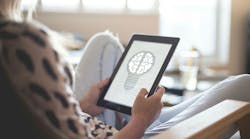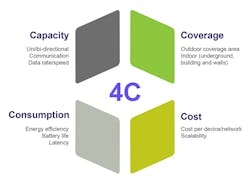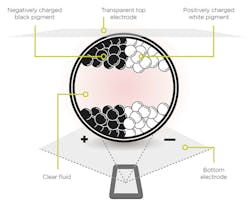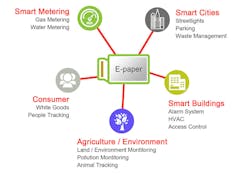The Internet of Things (IoT) is vast and ever-expanding, in terms of its infrastructure and connected devices. Leading research and advisory company Gartner has estimated some 8.3 billion devices would be connected by the end of 2017, increasing to 11.2 billion by the end of 2018, then nearly doubling to 20.4 billion by 2020. Approximately two-thirds of these projected figures are apportioned to consumer applications.
Interestingly, while spending is predicted to increase from US$2.1 billion in 2018 to US$2.9 billion in 2020, it isn’t rising as fast as the unit count. That seems to indicate prices are set to fall—partly through price erosion and due to increasing numbers of smaller, simpler devices becoming connected.
Opportunities and Challenges
While the IoT is set to change our lives profoundly as consumers, the impact will be just as striking for businesses. Through smart factories and remote environmental data—by connecting across machines, companies, and regions more than ever before—businesses will see a reduction in operating costs and increasing productivity, together with the creation of entirely new business models and revenue streams.
However, the path for businesses to achieve these results will not be an easy one, as it’s strewn with some considerable obstacles to negotiate. The IoT’s widespread roll-out may be one of its greatest advantages, but it also provides one of its most significant challenges. Each remote node requires power as well as the capacity to transmit data back to a central location via the cloud.
Texas-based market research company Frost & Sullivan has developed a useful model that represents four key issues in developing IoT solutions (Fig. 1). The 4C model depicts Capacity (data rate or data throughput), Consumption (battery life, often measured in years), Coverage (a network’s capability in providing effective coverage to maintain connectivity), and Cost (for the node as well as for network costs).
1. Frost & Sullivan’s 4C model for IoT considerations.
At present, around 90% of IoT connectivity is delivered by some form of local area network (LAN), such as Ethernet/Wi-Fi, with more local connectivity (from Bluetooth, Zigbee, RFID, and the like) used within buildings and for other short-range functions. Wider-area coverage currently employs cellular technology, although this proves pricey in terms of cost and power consumption. In addition, it can be subject to patchy coverage, causing intermittent connectivity.
However, a variety of emerging low-power wide-area network (LPWAN) technologies are set to address the limitations of cellular tech. While LPWAN spans both cellular and non-cellular technologies, the cellular approach provides the greatest coverage.
Two such cellular approaches come in the form of NB-IoT (narrowband IoT) and LTE-M Cat-M1 (Long Term Evolution for machines, category M1). Similar in many ways, both systems are based on orthogonal frequency-division multiple-access (OFDMA) technology and operate in the 450-MHz to 3.5-GHz range. NB-IoT has a slightly longer range at more than 15 km outdoors, but is offset by a maximum data throughput of 250 kb/s, against the 1000 kb/s for LTE-M.
However, cost really sets the two cellular LPWAN technologies apart, with hardware and monthly connectivity costs for NB-IoT being approximately 25% of those related to LTE-M.
Displays and the IoT
Although a significant portion of the IoT is based on machine-to-machine (M2M) communication, humans do need to interact regularly and, therefore, some form of display is necessary to rapidly view and integrate data. At a central monitoring station, power is usually readily available and complex dashboards can be developed. Nevertheless, installing a form of display at the remote node can boost functionality and effectiveness considerably, displaying key parameters or basic instructions to a human operator.
However, delivering this functionality poses challenges, particularly with the increasing use of LPWAN technologies where data throughput is reduced. Advanced touchscreen display technologies like LCDs require considerable quantities of data as well as significant power. On the other hand, LED-based indicators, like those used in embedded systems, can comfortably meet the data and power needs, although what information is yielded seldom meets the user’s needs.
E-paper: An Ideal IoT Display Solution
You may well be familiar with e-paper technology without having realized it. The mainstay tech behind popular reading devices like Amazon Kindle, e-paper is a low-power display technology that resembles the visual quality of traditional paper and ink. Each display comprises thousands of tiny capsules or pixels containing black and white negatively and positively charged ink particles (Fig. 2). When appropriate charges are applied across each ink-filled pixel, the color can be altered to create a high-resolution image.
2. E-paper displays contain thousands of capsules filled with charged ink particles.
E-paper boasts some significant characteristics that make it ideal for low-power, low-data-rate IoT applications. To start with, the technology is bistable so that once an image is created on the display, no further power is needed to maintain the image. Then there’s the fact that, in common with paper and ink, it’s reflective. Thus, the image is visible by using reflected light, rather than utilizing a backlight like LCD displays. As well as dramatically reducing power consumption, these factors also render the displays thinner and lighter than LCDs.
In view of the remote locations of countless IoT nodes, the issue of power consumption is critical to success. With many smart devices powered by small coin-cell batteries, the cost implications and sheer inconvenience of frequent trips to remote locations to replace batteries can be substantial.
Where IoT applications are dealing with comparatively slow-moving parameters, displays need only be updated when a human operator is present. As a result, the number of requisite updates remains low. This makes e-paper technology a suitable choice for so many modern IoT applications, such as in smart metering, smart buildings, and smart cities, and for consumer and agricultural/environmental use, which is often in a remote location (Fig. 3).
3. E-paper is appropriate for a wide range of IoT applications.
If you take the practical example of a 2-in. display that’s required to display data continuously with six updates throughout the day, then the considerable difference between an e-paper display and a similarly sized TFT LCD display is revealed. With typical power consumption for the e-paper module seen at 2.33 mA, the TFT LCD display would consume 30 mA. Put another way, the power consumption for the e-paper display is 0.01 mAh daily, or 3.29 mAh per year. In contrast, the TFT LCD requires 720 mAh per day, and 262,800 mAh per year.
To put it into context, a basic CR2032 coin cell with a typical capacity of 225 mAh makes the TFT LCD display totally non-viable, as its use necessitates several battery changes every day. In comparison, the e-paper display will not have consumed 10% of its capacity after five years in use, and will only need to be replaced just once during the lifetime of your average human.
In Summary
The IoT is already significant in our lives and continues to expand and evolve, becoming more widespread than almost any other technology over the years ahead. To maintain this trajectory of growth and development, technology needs to keep pace, becoming more suited for IoT applications. For instance, communications technology is progressing to LPWAN, delivering sufficient capacity and coverage for the IoT while at the same time reducing consumption and cost.
Where common LCD TFTs are demonstrably non-viable for modern IoT applications, advances are being made in other areas of technology. Extremely low-power e-paper displays are one such area, delivering the functionality required for remote IoT nodes to operate, and, at the same time, massively surpassing the demanding power goals required.
HD Lee is Chief Technology Officer for Pervasive Displays.




